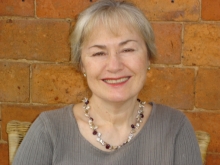INCREASING THE FLOW OF CAPITAL FOR GOOD - INVESTING AND GIVING

Let us remind ourselves of why people support the arts. They do so because of a passion for the art form, because they can see how their contribution will help the institution to flourish, to produce excellent and challenging work, to enable new projects and to reach and inspire new audiences.
Their support is reinforced through meeting the performers, artists, conservators, writers, wigmakers, paint analysts… all the creative and expert people that together ensure presentations, exhibitions, festivals, museums and archives of the highest quality. They enjoy sharing the experience and learning more about the art-form, and doing so in the company of others who share their passions. This is exemplified in two quotes from major donors to the arts (and other causes) whom I interviewed for Why Rich People Give.
"I enjoy getting to know other givers. This becomes an important part of life. It becomes a community. I like people who like musicians…it’s a congenial group."
"The sense of making a real difference…satisfaction, getting to know some extraordinary people.who are now friends. Fun with a capital F. You can’t buy it and it’s unobtainable elsewhere."
What this means is that (unlike with some other causes) hardly anyone will be inspired to give to the arts without some kind of personal experience or an association with the art form. This means that knowing and being able to reach your audiences (in the widest sense, including online) is crucial. But having reached them how are they drawn into the organisation?
Thinking about the very necessary need to invest in competence and building capacity to enhance philanthropic engagement, we see several strands:
- Working with organisations to change the institutional culture – people want to meet those who deliver the mission, not (or not only) the development staff, however charming and knowledgeable they might be
- Ensuring that trustees and other senior volunteer leadership understand the importance of their involvement, to introduce prospects, as hosts at events, to thank people, to give according to their means and so on, and crucially that it needs investment – too many Boards will the ends but not the means
- Training professional development staff – in processes, research, cultivation, relationship management and so on
In other words, development is the responsibility of all, from chair to caretaker.
I make the point that many donors who support the arts also support other causes.
We are aware that there are a number of concurrent initiatives, with overlapping strands in the ideas put forward by DCMS, in the Endowment paper by Neil MacGregor, Director of the British Museum and another by Alan Davey, of Arts Council England, in the recent Funding Commission report from NCVO, and in the Giving Green Paper published on 29th December. A number of issues related to the provision of philanthropy advice are being looked at by a large team of people under the aegis of Dame Steve Shirley, the Ambassador for Philanthropy, and the independent Philanthropy Review has also been set up, to report in the spring, with members drawn from across all sectors, and including two of our contributors.
Too often the culture sector positions itself as, somehow different from the rest of the charitable sector, but I think there are at least 3 reasons why collaboration with the OCS and others is essential:
- A central proposition of the arts is that it is not an optional extra; it is an essential element in our lives, and the institutions and individuals involved in delivering great art are as important to the Big Society as those working in education, sport, health, with the disadvantaged and excluded. It is part of the portfolio of activities that make life in the UK what it is.
- The elements relating to philanthropic engagement I set out above are common to all sectors. There may be differences of emphasis depending on the cause, the locality, the size and the demographics of likely supporters, but the principles are the same.
- If every government Department with any links to private philanthropy (are there any with none??) contributed a relatively small sum to a carefully managed central fund, a transforming difference could be made to the culture of asking and donor engagement, and hence the culture of philanthropy, in this country.
A collaborative approach would send a very powerful message – and be very cost effective!
Theresa Lloyd
Following a 15-year career in international banking, in 1986 Theresa Lloyd established the corporate fundraising division of Save the Children, and in 1990 she became the UK director of ActionAid.
After taking an art history diploma with distinction, in 1995 Theresa established her consultancy; she is now recognised as a leading adviser on strategic planning, governance and fundraising to non-profit organisations. She also advises families and companies on the development of strategies for their philanthropy. She was the founder director of Philanthropy UK (2001 – 04) and now sits on the Advisory Board.
Her books include A Guide to Giving, now in its third edition (2008), sponsored by Coutts. Why Rich People Give (2004) is the first major British study into the wealthy and their philanthropy. Cultural Giving (2006) is the first guide in the UK to focus on individual giving for the arts and heritage. Theresa has served on boards in the arts, health and international development sectors. She is currently a trustee of The European Association for Philanthropy and Giving. She is also a council member of Bath University, a member of the Business Advisory Group of Comic Relief and of the development board of the Orchestra of the Age of Enlightenment. She is also a trustee of two family charitable trusts.
Theresa Lloyd Associates
Tel: +44 (0)20 7569 8740
Email: theresa@theresalloyd.co.uk
Website: www.theresalloyd.co.uk





